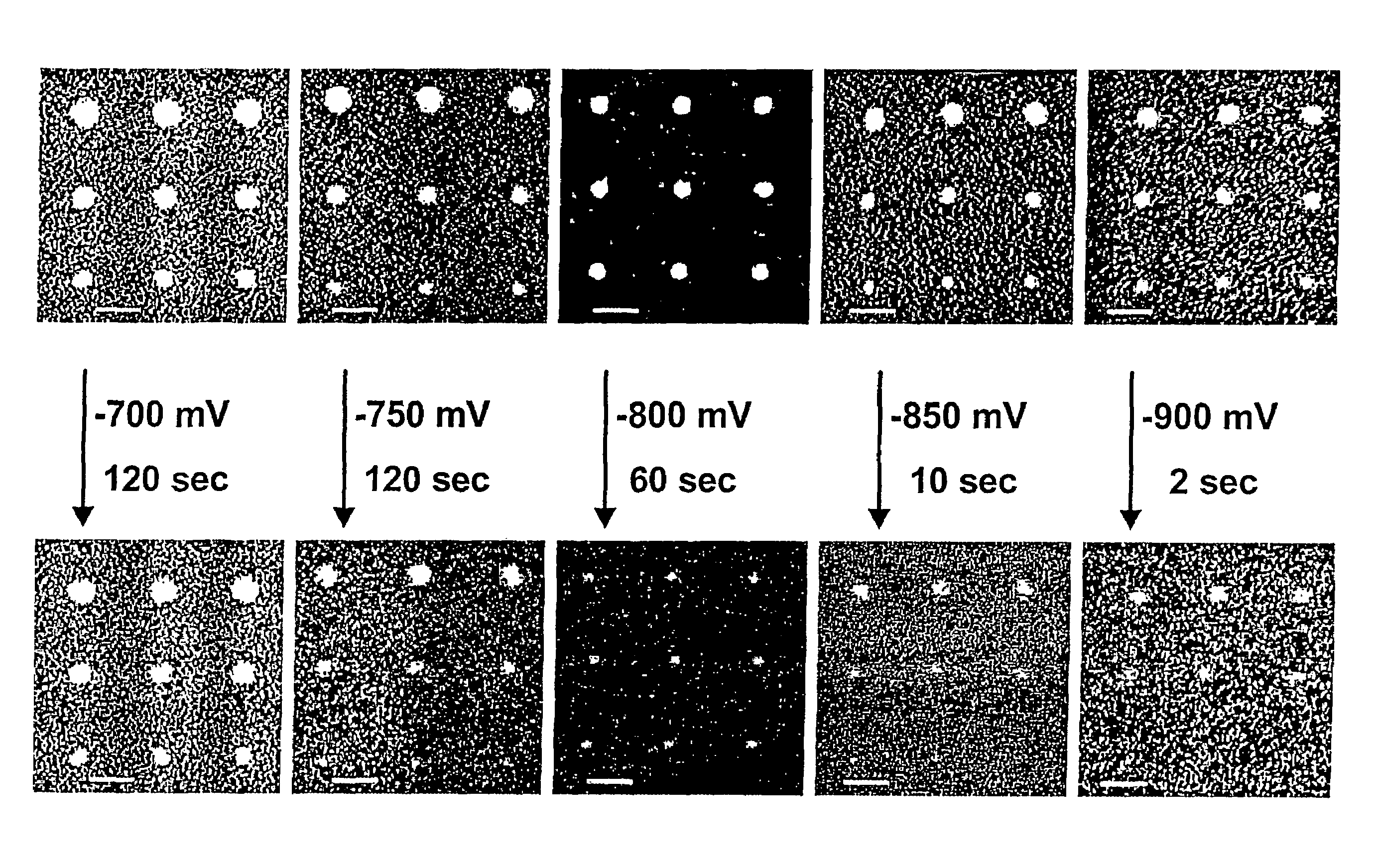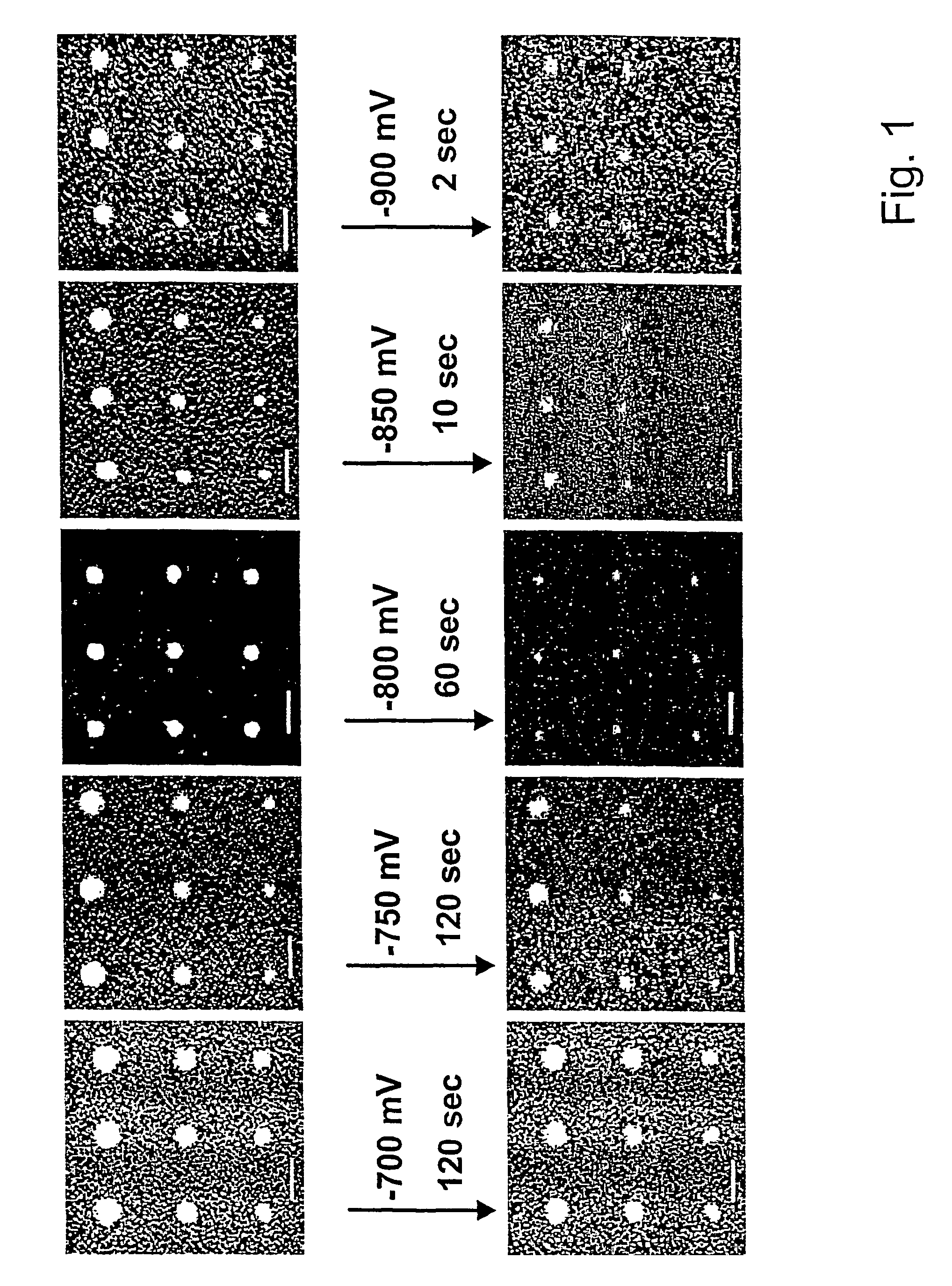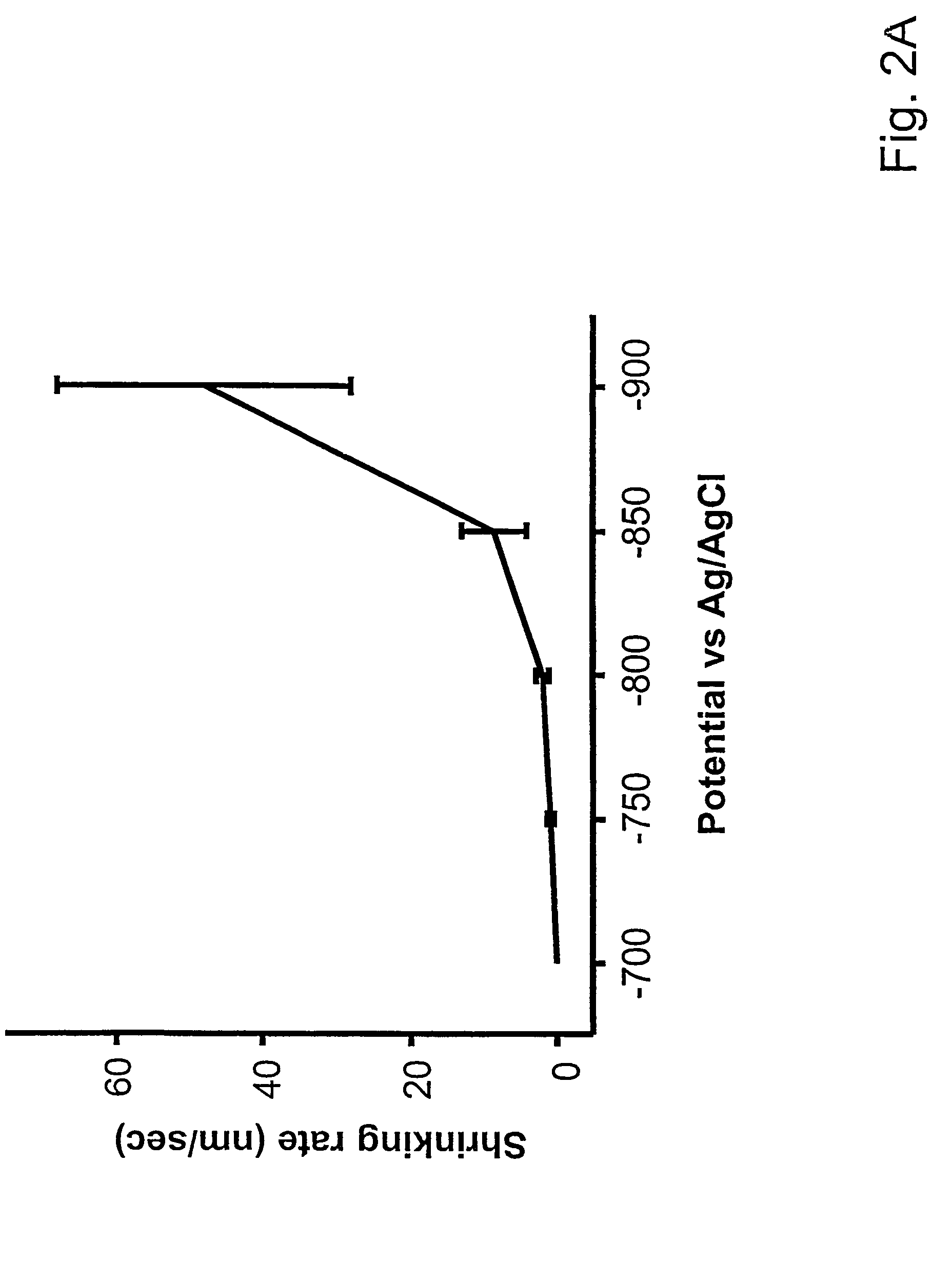Electrochemical miniaturization of organic micro-and nanostructures
a micro- and nano-structure technology, applied in the field of electrochemical miniaturization of organic micro- and nano-structures, can solve the problem that the dpn cannot rival the available printing process, and achieve the effect of reducing the size of the dpn
- Summary
- Abstract
- Description
- Claims
- Application Information
AI Technical Summary
Benefits of technology
Problems solved by technology
Method used
Image
Examples
example 1
[0047]This example provides details of substrate preparation, DPN or microcontact printing of organic structures, and electrochemical whittling procedures. A polycrystalline Au film substrate was prepared by evaporating 10 nm of Ti (99.99%; Alfa Aesar, Ward Hill, Mass.) on SiOx followed by 60 nm of Au (99.99%; Alfa Aesar, Ward Hill, Mass.) in an evaporator chamber (Edwards Auto 306) at room temperature (Weinberger et al., Adv. Mater. 12:1600 (2000)). Au ball substrates were prepared from approximately 0.5 cm lengths of Au wire (99.99%, 0.5 mm in diameter; Alfa Aesar, Ward Hill, Mass.) by using a hydrogen / oxygen flame (Ross et al., Langmuir 9:632 (1993)).
[0048]DPN of organic nanostructures was performed using an atomic force microscope (AFM, CP, Veeco, Santa Barbara, Calif.) equipped with a 100 μm scanner with closed-loop scan control and commercial lithography software (DPNWrite™, DPN System-1, NanoInk Inc., Chicago, Ill.). Gold-coated Si3N4 AFM cantilevers (Microlever, Veeco, Santa...
example 2
[0052]This example demonstrates the technique of electrochemical desorption on organic nanostructures using different electrochemical potentials. FIG. 1 shows the electrochemical desorption of MHA nanostructures at different potentials. A threshold voltage of about −750 mV vs Ag / AgCl was found, above which no desorption could be detected under our experimental conditions. As seen in FIG. 1, when the substrate was held at a potential of −700 mV in an aqueous solution of 0.5 M MOH (where M=K, Na or Li) for two minutes, the MHA dot size (approximately 300 nm) showed no detectable change. These results indicate that when a potential of −750 mV is applied to a substrate, the MHA dots begin to shrink at a rate of approximately 50 nm / min, see FIG. 1. Generally, more negative potentials accelerate feature size reduction. Under a potential of −800 mV, the desorption rate becomes approximately 120 nm / min. As the potential becomes more negative, the MHA dots shrink so fast that the desorption ...
example 3
[0053]This example demonstrates the effect of electrochemical desorption on nanostructures in a variety of electrolytes. As shown in FIG. 3, when a potential of −750 mV vs Ag / AgCl is applied to the substrate, the MHA dots start to shrink in both NaOH and LiOH solutions. Again, no obvious size change was detected when the substrate potential was held at −700 mV or more positive for several minutes in both NaOH (compare FIGS. 4A and 4B) and LiOH (compare FIGS. 4C and 4D) solutions.
[0054]However, as shown in Table 1, the desorption rates of the MHA nanostructures in LiOH, NaOH, and KOH solutions were markedly different. At an electrode potential of −750 mV, the average desorption rate in 0.5 M aqueous NaOH solution was 16±7 nm / min, while in 0.5 M aqueous LiOH solution the desorption rate was 6±3 nm / min. The desorption rates in both NaOH and LiOH solutions are much lower than that in KOH solution. Although the desorption rate in LiOH solution was much slower, there was still a strong de...
PUM
| Property | Measurement | Unit |
|---|---|---|
| electrical potential | aaaaa | aaaaa |
| electrical potential | aaaaa | aaaaa |
| feature size | aaaaa | aaaaa |
Abstract
Description
Claims
Application Information
 Login to View More
Login to View More - R&D
- Intellectual Property
- Life Sciences
- Materials
- Tech Scout
- Unparalleled Data Quality
- Higher Quality Content
- 60% Fewer Hallucinations
Browse by: Latest US Patents, China's latest patents, Technical Efficacy Thesaurus, Application Domain, Technology Topic, Popular Technical Reports.
© 2025 PatSnap. All rights reserved.Legal|Privacy policy|Modern Slavery Act Transparency Statement|Sitemap|About US| Contact US: help@patsnap.com



